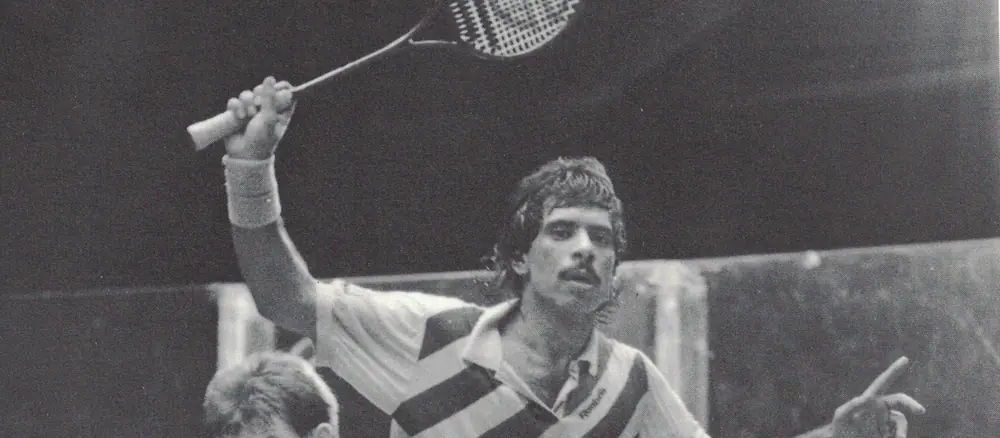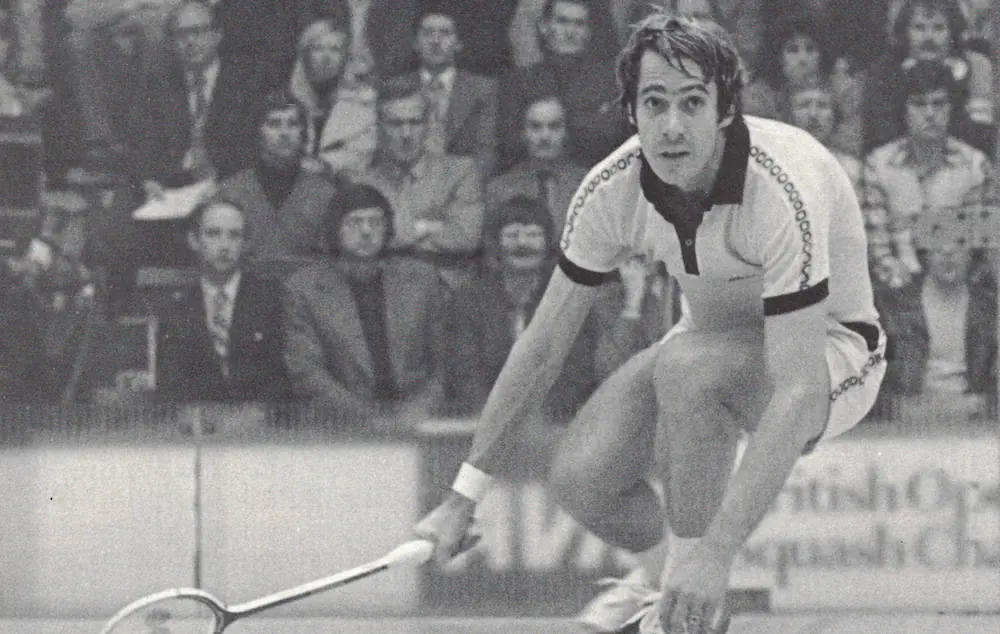27 September 2022 / 3-Min Read / Translate
The simple answer used to be, the higher you held the racket, the more control you had and the lower you held it, the more power you had. And while that still might be true to some degree, modern rackets give plenty of power already, so there is very little extra power to be gained by holding the racket near the butt.

The main reason I recommend players how the racket higher rather than lower, is for the index finger to wrap around the tapering grip. I, and most coaches and players, feel that this allows a firmer grip and a more natural position of the hand. Holding the racket higher, means your hand is closer to the point of contact and this mens you have more control. Imagine a racket twice as long as a current squash racket – the further away you are from the ball, the harder it is to move the racket head precisely.

I remember practicing with some Pakistani professionals back in my time as coach at Wembley Squash Centre and they all held the racket very low on the grip. Their argument was that they had slightly better reach and could hit the ball harder. I tried it, but it never felt natural to me. While I do recommend the higher grip, I understand that there isn’t one “perfect” position and players need to have some ability to personalise how they hold the racket.

I want to emphasis that what I am about to say is a guess on my part. I haven’t spoken to anybody at Dunlop to confirm this. As you can see from the image above, Dunlop released a model called the S.G., which stands for Short Grip (I have been told this). The grip is shorter than every single racket I have ever played with, and honestly, it feels really strange to use.
I am guessing the reasoning behind the short grip, was to combine the control felt by wrapping the index finger around the tapered section AND give extended reach and power. I don’t like. There’s a balance issue involved and that short grip always feels too head heavy to me.
Some players, and I have done it myself in the past, feel that holding the racket very low for very hard-to-reach shots at the front is the right thing to do. That extra few centimetres can make the difference between reaching the ball and not.
However, for many amateur players, then being able to immediately reposition the grip back to normal, while recovering back to the T is difficult. The answer lies in the simple philosophy of “try it and see”. If you can do it without too much trouble: fine. But if you are the kind of person who almost needs to look at the grip to make sure you are holding it correctly, then perhaps it’s a bad idea.
Each racket manufacturer supplies rackets with slightly different grip sizes and shapes. It’s not something people talk about enough because it can make a huge difference to how a racket feels in your hand. Most players can adapt to those slight difference either naturally or by using different thickness grips. Not everybody can, and since the grip is the contact point between you and the equipment, it is vital to feel comfortable.